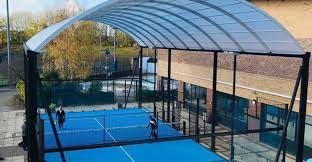

The Dynamics of a Squash Court A Comprehensive Overview
Squash is a sport that has gained worldwide popularity for its fusion of speed, strategy, and athleticism. Central to this fast-paced game is the squash court, an enclosed space that plays a crucial role in the game's dynamics. Understanding the design, dimensions, and characteristics of a squash court is essential for players, coaches, and enthusiasts alike.
The Dynamics of a Squash Court A Comprehensive Overview
The court is distinctly marked with various lines that define playing areas. One significant line is the service line, located about 6.5 feet from the front wall. Players must hit the ball above this line when serving, which adds a tactical element to the game. The tin, a metal strip at the bottom of the front wall, marks the lower boundary; if the ball strikes below this level, the rally ends, and the point goes to the opponent. Understanding these markings is vital for successful gameplay and strategic planning.

In addition to the front wall, the two side walls and back wall are crucial components of the court. The side walls are slightly angled in traditional squash courts, which can influence the ball's trajectory and complicate shots for players who are less experienced. The back wall offers an opportunity for strategic play, as players can use it to set up more complex shots. Mastering the angles of all four walls is a skill that separates advanced players from novices.
The flooring in a squash court is typically made of hardwood, rubber, or synthetic materials designed to absorb impact and provide good traction. This cushioning is essential, as squash players make quick lateral movements and need a stable foundation to prevent injuries. Proper footwear is also paramount; squash shoes are specifically designed to provide the necessary grip and support needed for rapid movements.
Beyond the physical attributes of the court, the atmosphere within a squash facility can greatly enhance the experience. Lighting, ventilation, and seating arrangements for spectators all contribute to the ambiance of the game. A well-designed court not only supports high-level competition but also fosters a sense of community among players and fans.
In conclusion, the squash court is an intricate environment where skill, strategy, and physical fitness converge. Understanding its dimensions, design, and dynamics can significantly enhance a player's performance and appreciation of the sport. As squash continues to grow globally, awareness of the court's role remains vital in promoting the sport and encouraging new players to engage with it. Whether you're a seasoned competitor or a curious newcomer, stepping onto a squash court promises an exhilarating experience filled with challenges and rewards.
High-Performance Industrial Flooring Solutions China Paddle Tennis Court for Sale
High-Performance Industrial Flooring Solutions Durable & Cost-Effective
Homogeneous Transparent Floor – Durable & Stylish Rubber Floor Solutions
Premium Homogeneous Transparent Floor for Durable & Stylish Spaces Rubber Floor Solutions
Premium Sports Floor Solutions Durable PVC Sports Floor & Rubber Floor for Gyms
Durable Rubber Composite Floor Premium Rubber Floor & Mats Solutions